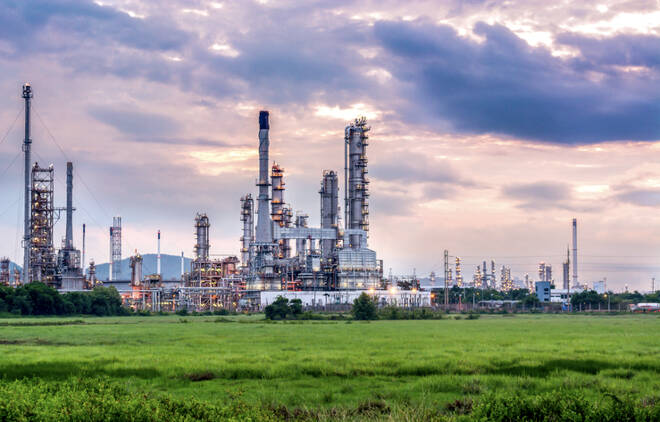Advertisement
Advertisement
Natural Gas Price Fundamental Daily Forecast – Tropical Storm Weighing on Short-Term Demand
By:
As long as the influence of the tropical storms is short-term, prices could rebound late Friday or early next week with the return of hotter temperatures. If all comes down to whether traders are willing to buy strength, or play for a pullback into support or value.
Natural gas futures are inching lower on Friday after a steep sell-off the previous session was driven by a bigger-than-expected storage build, according to government data. There was no follow-through to the downside, which suggests weather concerns may be propping up prices. Heading into the weekend, traders are eyeing a potential hurricane in the Gulf of Mexico that could have a negative effect on demand, and hot temperatures that could underpin demand.
At 10:29 GMT, September natural gas futures are trading $2.392, down $0.009 or -0.37%.
The weather is a little tricky. The impact of the storm is actually expected to exert a bearish influence. Tropical Storm Barry is expected to negatively impact liquefied natural gas (LNG) exports. Additionally, it is expected to lead to lower short-term demand, which could keep a lid on prices before the heat returns later in the month.
U.S. Energy Information Administration Weekly Storage Report
On Thursday, the EIA reported an 81 Bcf weekly injection into U.S. storage for the week-ending July 5.
Bloomberg analysts were looking for a 76 Bcf build, with estimates ranging from 62 Bcf to 84 Bcf. Reuters predicted a 73 Bcf build, with a range of 62 Bcf to 80 Bcf. The ICE EIA Financial Weekly Index settled Tuesday at 80 Bcf, and Natural Gas Intelligence was looking for a 70 Bcf injection.
Last year, the EIA recorded a 55 Bcf injection for the period, and the five-year build is 71 Bcf.
Short-Term Weather Outlook
According to NatGasWeather for July 12-18, “The Southern US remains hot with highs of 90s from Texas to the Southeast, 100s over the Southwest. The exception will be along the coasts of Louisiana and East Texas were Tropical Storm Barry will bring heavy rain and cooling. The Midwest/Great Lakes to Northeast will warm back up into the upper 80s to lower 90s most days through next week. The West will be very warm to hot besides the cooler Northwest. Overall, national demand will be high.”
Daily Forecast
As long as the influence of the tropical storms is short-term, prices could rebound late Friday or early next week with the return of hotter temperatures.
The daily chart will also continue to influence the direction of the market.
The intermediate range is $2.741 to $2.115. Its 50% to 61.8% retracement zone at $2.428 to $2.502 is resistance.
The short-term range is $2.115 to $2.476. If the selling pressure continues then look for a potential pullback into its retracement zone at $2.296 to $2.253.
Look for an acceleration to the upside if buyers can take out $2.502 with conviction.
If all comes down to whether traders are willing to buy strength, or play for a pullback into support or value.
About the Author
James Hyerczykauthor
James Hyerczyk is a U.S. based seasoned technical analyst and educator with over 40 years of experience in market analysis and trading, specializing in chart patterns and price movement. He is the author of two books on technical analysis and has a background in both futures and stock markets.
Advertisement
